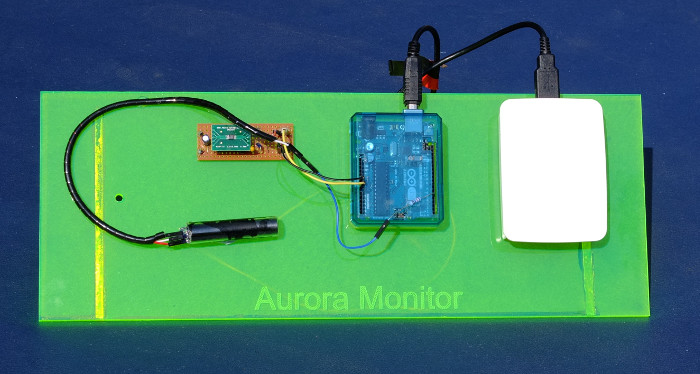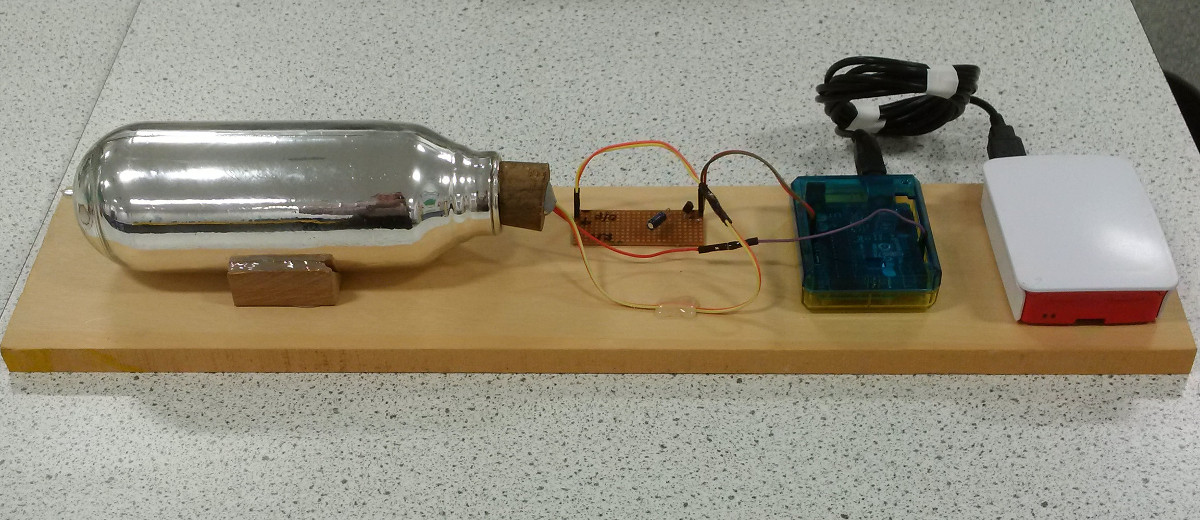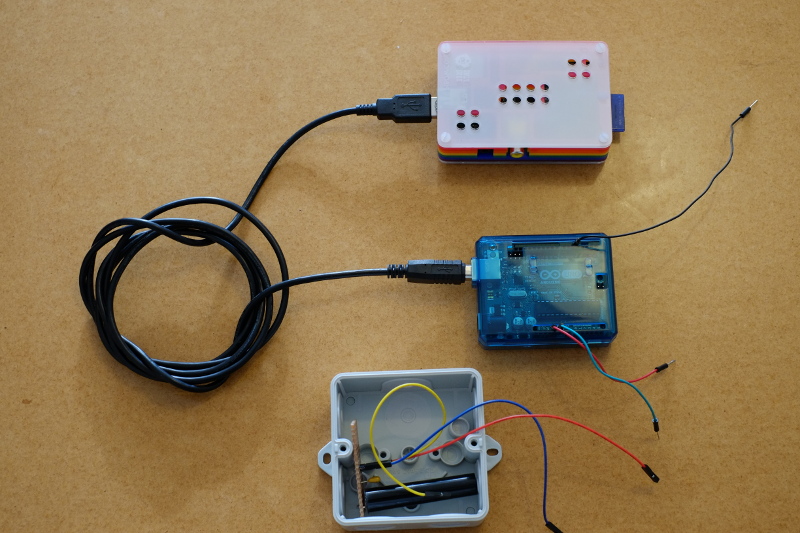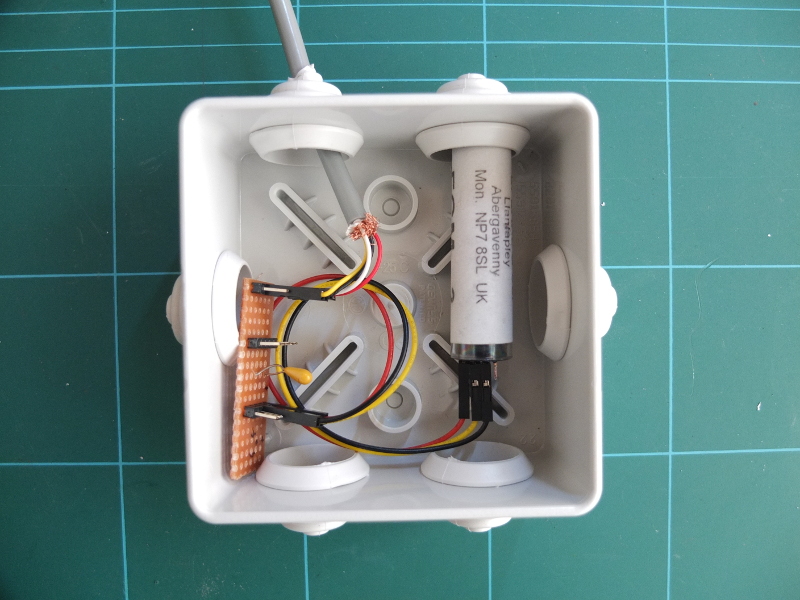 |
Dr Ian Robinson |
|---|---|
| Physics Projects 'n Stuff |
Opensource Aurora Monitor for Schools & Home
This is the legacy site for the School Physics Projects. Active projects are now at schoolphysicsprojects.org . |
|---|
| Paper #1 | Updated Paper | Construction Instructions |
Here is a low-cost nanoTesla reolution magnetic field sensor. It monitors minute fluctuations in the earth's magnetic field caused by variations in the solar wind. A stable system this has been left running for months at a time - uploading data hourly to this site. The code is well tested and robust with a modular design permitting easy adaptation and development by students of both the software and hardware. The system has been described in a paper in Physics Education Solar wind monitor—a school geophysics project. The code, construction details and an updated paper can be downloaded via the 'Downloads'. section above.
As the solar wind interacts with the upper atmosphere it distorts the earth weak magnetic field. Thus - rather perversely, monitoring variations in the earth's field via a magnetometer gives information on the strength of the solar wind and coronal mass ejections from the sun. During periods of high activity aurora may be visible.
|
|
|
note: The system's current location is 'noisy' with step changes being caused by the movement of cars some 10+ metres away. A more suitable rural site is planned.

At its core is a Speake Sensors FGM-3h fluxgate magnetometer (~£30) in a thermos flask. A simple signal cable connects to an Arduino Uno which monitors the ~50kHz square wave signal from the F.G.M as well as a temperature sensor. Data are transferred via USB to a headless networked Raspberry Pi which averages the frequency over 1 minute appending the timestamped results to a datafile. Data is plotted every hour using matplotlib and these plots of the daily field variation, Hourly Standard Deviations and Monthly S.D.s are automatically uploaded to a website. The python script is robust enough to handle signal and power outages. As the FGM is sensitive to temperature the system may incorporate a temperature probe to allow further tweaking of the resolution. All data is stored in .mseed format, a geophysics standard permitting further analysis using tools such as ObsPy
The results look good. One may compare the plot above with that produced by the British Geological Survey using rather more expensive equipment - see B.G.S. Their nearest station is the middle set of plots - the yellow line being the E-W component measured here.

The project is simple to complete in its current form. The code is pre-written, easily modified and being Python can run on Windows, Linux, Mac or on a device such as a Raspberry Pi without modification. Being modular one can easily extend or adapt the code or hardware allowing for ongoing development at home or by a school science club.
Further development could include:-- Replacing the Arduino with a Pi/Beagleboard fitted with a fast digital frquency sampler.
- Adding a wireless interface.
- Adding one or two more sensors to monitor vertical and N-S components of the earths field
- Having the code email/flag abrupt changes likely to indicate aurora.
- Replacing the Arduino with a PIC or similar.
- Performing more sophisticated signal processing, possibly using ObsPy.
I have demonstrated this and other projects at the Maker Faire, Newcastle in 2016, 2017 and 2018. So far my geophysics projects have been personally funded and are published entirely open-source, pro-bono. Feel free to take, use, and improve.
I am interested in promoting real-science projects in schools and the community. As an A-level physics teacher I have some years experience in project development with students both in my college and local schools. The experience gained by students is invaluable and makes a tremendous addition to a university or apprenticeship application. I want to promote geophysics projects more heavily via projects to monitor aurora, lightning and infra-sound. Along with the fluxgate monitor here I am presently building a proton precession magnetometer and gradiometer for geomagnetic surveys. I also have a working infrasound monitor which is looking very interesting indeed.
Downloads
Code and instructions may be downloaded here - link.
Aurora Monitor - Development


